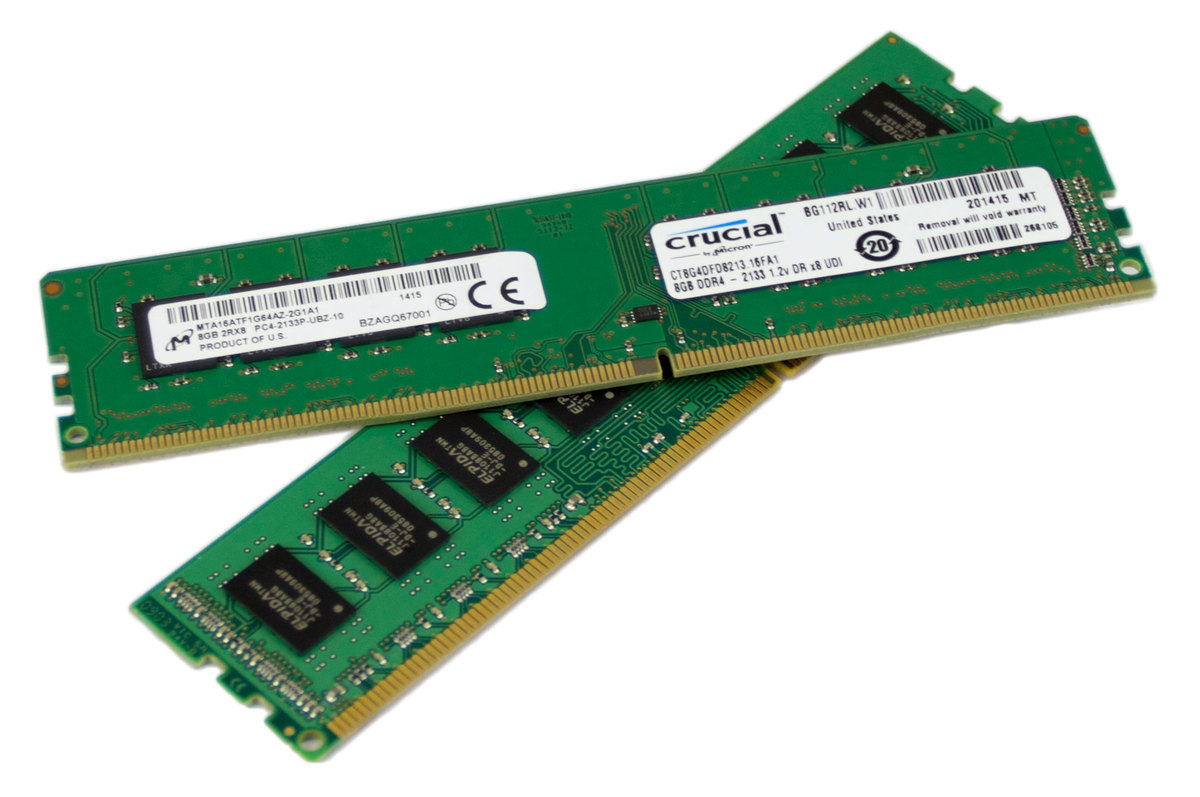Identifying DDR4 RAM physically is crucial for several reasons.
Furthermore, physically identifying DDR4 RAM can help prevent the risk of purchasing counterfeit or incompatible memory modules.
In this guide, we will discuss how to visually identify DDR4 RAM by examining its key physical features.

What is DDR4 RAM?
One of the key advancements of DDR4 RAM is its increased data transfer rates.
DDR4 RAM operates at higher frequencies, enabling it to transfer more data per clock cycle.
Another significant feature of DDR4 RAM is its higher capacity.
DDR4 RAM modules are available in various capacities, ranging from 4GB to 128GB or even higher.
This allows users to have more memory available for running multiple applications simultaneously and handling memory-intensive tasks.
DDR4 RAM also introduces more advanced error correction mechanisms, such as ECC (Error Correcting Code).
ECC helps detect and correct memory errors, ensuring data integrity and system stability.
This is particularly important in critical applications like servers and workstations, where data reliability is essential.
Why is it important to identify DDR4 RAM physically?
Physically identifying DDR4 RAM is crucial for several reasons.
Firstly, it ensures compatibility when upgrading or replacing memory modules.
DDR4 RAM modules may have different characteristics, such as speed, voltage, and memory capacity.
This compatibility ensures optimal performance and avoids potential issues that may arise from using incompatible memory modules.
Furthermore, physically identifying DDR4 RAM helps to verify its authenticity.
Counterfeit memory modules can be a common issue in the market.
Counterfeit RAM not only affects performance but can also pose risks to the stability and security of your system.
Physically identifying DDR4 RAM can also help with troubleshooting and diagnosing issues.
Additionally, identifying DDR4 RAM physically allows you to monitor and manage your systems memory configuration effectively.
DIMMs have a rectangular shape with notches on the bottom edge.
The notches on DDR4 RAM modules are positioned differently compared to previous generations, such as DDR3 or DDR2.
Pay attention to the notches and ensure they align with the corresponding slots on your motherboard.
2.Pin count:DDR4 RAM modules generally have a 288-pin design.
Count the number of pins on the module to verify that it matches the DDR4 standard.
Ensure that all the pins are intact and not bent, as this can impact the modules functionality.
Ensure that the speed rating matches your systems requirements for optimal performance.
4.Voltage:DDR4 RAM modules typically operate at a standard voltage of 1.2 volts.
This lower voltage requirement contributes to improved power efficiency.
Check the label or specifications to confirm that the DDR4 RAM module operates at the correct voltage.
Using DDR4 RAM with a higher voltage can damage the module or other components in the system.
5.Memory capacity:DDR4 RAM modules come in various capacities, ranging from 4GB to 128GB or even higher.
The capacity is often indicated on a label or etched onto the module.
By examining the form factor, you’re free to ensure compatibility with your box systems memory slots.
DIMMs have a rectangular shape with notches on the bottom edge.
These notches help align the module correctly when inserting it into the memory slot.
see to it the memory module you are inspecting matches the DIMM form factor.
The notch placement ensures that the module can only be inserted in the correct orientation, preventing incorrect installation.
This ensures a secure and proper connection between the DDR4 RAM module and the motherboard.
4.Consider any additional notches:Some DDR4 RAM modules may have additional notches on the bottom edge.
These additional notches serve specific purposes, such as enabling specialized features or ensuring compatibility with specific motherboards.
Checking the form factor of DDR4 RAM is essential to ensure proper installation and compatibility with your rig system.
Carefully count the number of pins on the bottom edge of the DDR4 RAM module.
Ensure that all the pins are present and intact.
DDR3 RAM generally has 240 pins, while DDR4 RAM has 288 pins.
Motherboards support specific types of RAM with specific pin counts.
Damaged pins can hinder proper installation and result in poor connectivity or system instability.
The speed rating represents the maximum data transfer rate that the RAM module can achieve.
Common DDR4 RAM speeds include 2133MHz, 2400MHz, 2666MHz, and higher.
Locate the speed rating information on the DDR4 RAM module.
4.Consider budget and cost:Faster DDR4 RAM modules typically come at a higher cost.
Consider your budget and the overall value you prioritize for your system.
Verifying the voltage of DDR4 RAM is essential to ensure proper functionality and prevent any damage.
This lower voltage requirement compared to previous DDR3 RAM contributes to improved power efficiency.
Ensure that the DDR4 RAM module you are inspecting operates at the correct voltage.
Mismatched voltages can lead to system instability or damage to the RAM module or other components.
It may cause overheating, unstable system performance, or even damage to the RAM module and other components.
Always adhere to the specified voltage requirements and avoid using RAM that exceeds those limits.
Look for information such as 4GB, 8GB, 16GB, or higher.
The memory capacity is typically indicated in gigabytes (GB) or sometimes in megabytes (MB).
2.Physical identification:In some cases, the memory capacity may be etched onto the DDR4 RAM module itself.
Examine the module closely to see if the capacity is specified directly on the chip.
This can help in quickly identifying the memory capacity without needing to refer to additional documentation or labels.
4.Upgrade potential:Evaluate your future needs and potential system upgrades.